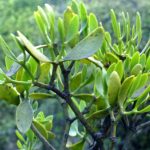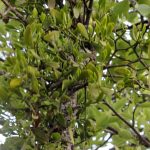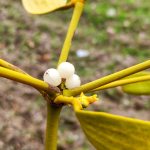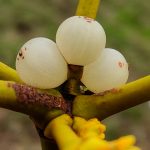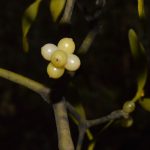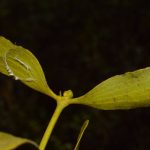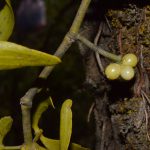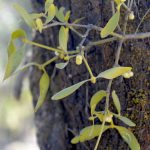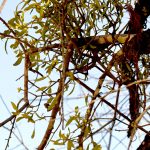|
Viscum album L., Sp. Pl. 2: 1023. 1753 (Syn: Stelin album (L.) Bub.; Viscum album f. lutescens (Makino) Kitag.; Viscum album var. lutescens Makino; Viscum album f. rubroaurantiacum (Makino) Kitag.; Viscum album var. rubroaurantiacum Makino; Viscum dichotomum Gilib.; Viscum polycoccon Houtt.; Viscum stellatum Buch.-Ham. ex D.Don) as per Catalogue of Life as on 8.7.20);
.
Albania, Austria, Belgium, Baleares, England, Bulgaria, Corsica, Czech Republic, Slovakia, Denmark, France, Germany, Greece, Switzerland, Netherlands, Spain, Hungary, Italy, Serbia & Kosovo, Slovenia, Croatia, Macedonia, Montenegro, Bosnia & Hercegovina, Portugal, Malta, Norway, Poland, Romania, Sicily, Sweden, Latvia, Lithuania, C-European Russia, Crimea, Belarus, Ukraine, Algeria, Northern Caucasus, Armenia, Azerbaijan, Georgia [Caucasus], Tibet, China (Yunnan), Turkey (Inner Anatolia, N-Anatolia, NE-Anatolia, NW-Anatolia: Bithynia, S-Anatolia, SSW-Anatolia, W-Anatolia, WN-Anatolia), European Turkey, Iran (EC-Iran, E-Iran, N-Iran, Iranian Aserbaijan, W-Iran), Lebanon (Antilebanon), Pakistan (Kurram, Chitral, Swat, Murree, Hazara), India (Jammu & Kashmir, Himachal Pradesh, Uttarakhand, Arunachal Pradesh, Nagaland), Myanmar [Burma] (Mon), Nepal, Vietnam, USA (I) (California (I)) as per Catalogue of Life as on 8.7.20);
.
European Mistletoe or Common Mistletoe; हडचुर Hadchur (Ref. Floraof Nepal); Bird Lime, Birdlime Mistletoe, Mystyldene, Lignum Crucis, All-heal (Ref. Sacred Earth);
.
In Viscum album the leaf is strap-shaped where as in this species (V.monoicum) of Viscum the leaf is some what falcate, coriaceous, attenuated at the base to a short petiole (these characters are found in V.monoicum).
.
As per efi thread: Gori Valley Tour: Viscum album from Kosani: yes. once upon a time folks thought it to have anti-cancer properties, esp in switzerland Viscum album AT MAR 2017/04 : 6 posts by 3 authors. Attachments (3)
Viscum album Seen the beautiful photograph of this plant by … in Nice shots. ‘Mistletoe’ (Viscum album) was transferred from the Loranthaceae family to Santalaceae. In ‘Flora of the British Isles’ (1962) the species was recorded from Southern Scandinavia southwards to N.Africa and east to Central Asia and Japan. Given such a widespread distribution, I wonder if this taxon has been sub-divided since then?
It is quite common on a variety of deciduous tree species near where I live. I observe quite a number of examples at this time of year (i.e. when there are no leaves on the trees) during bus journeys from my village to the train station I use to travel around the country.
I shall post some images from the UK and comment on its distribution in the Himalaya and that of Viscum cruciatum (recorded from lower elevations), on another occasion.
It was a sacred plant of the Druids during pre-Christian times, who cut it with a golden sickle. Associated with fertility, from which developed the British custom of kissing under it.
It was a local, rather rare plant in Buckinghamshire, UK a century ago but is certainly not anymore (at least locally).
.
here I’m attaching the images of Viscum album fruiting stage, not posted yet on eflora of india.
Captured at Darori Doda.
Alt. 1800m approx
.
. Try to post maximum level best, enlighten us from your flora, Viscum album L.: 9 very high res. images.
Location: Sundarijal, Kathmandu
Altitude: 2055 m.
Date: 09 December 2021
Habit : Wild
. References:
|
Viscum album subsp. album
Updated on December 24, 2024


